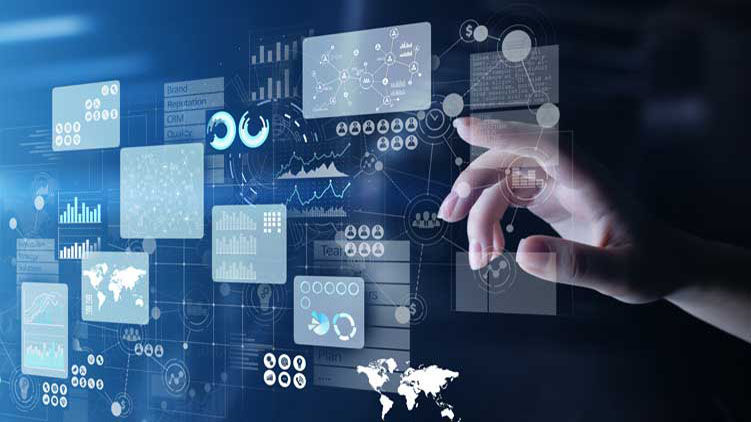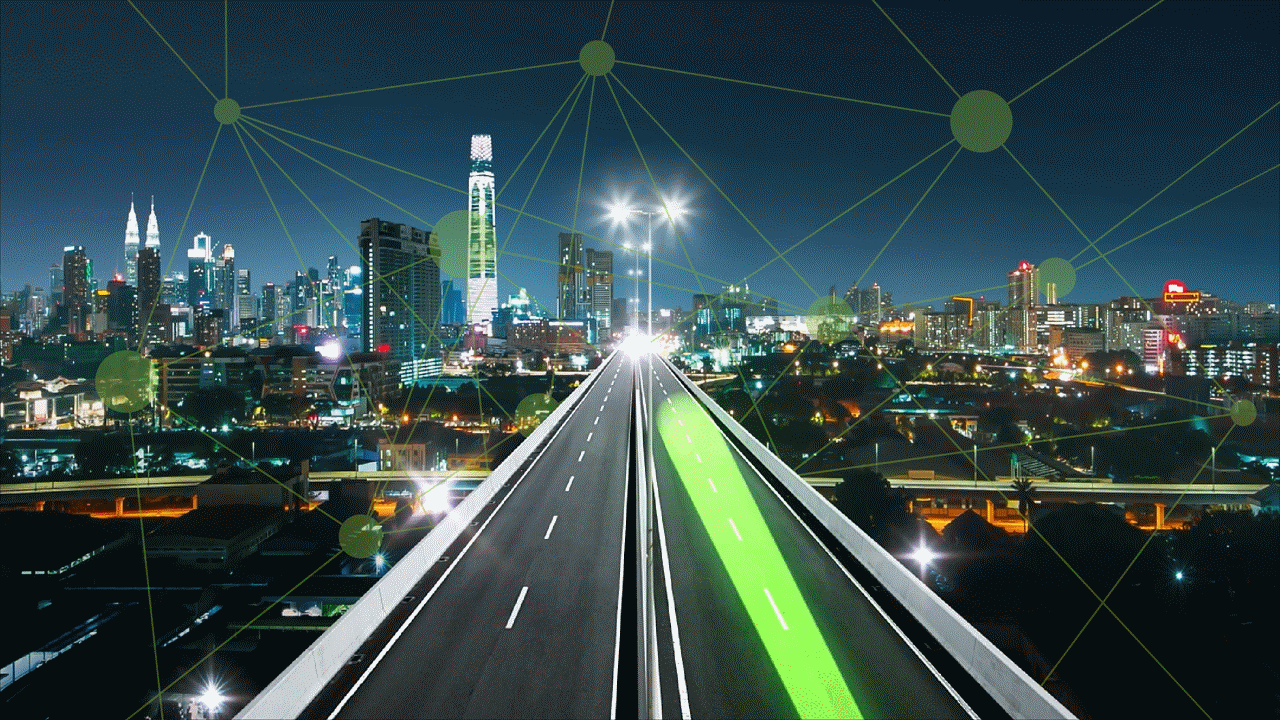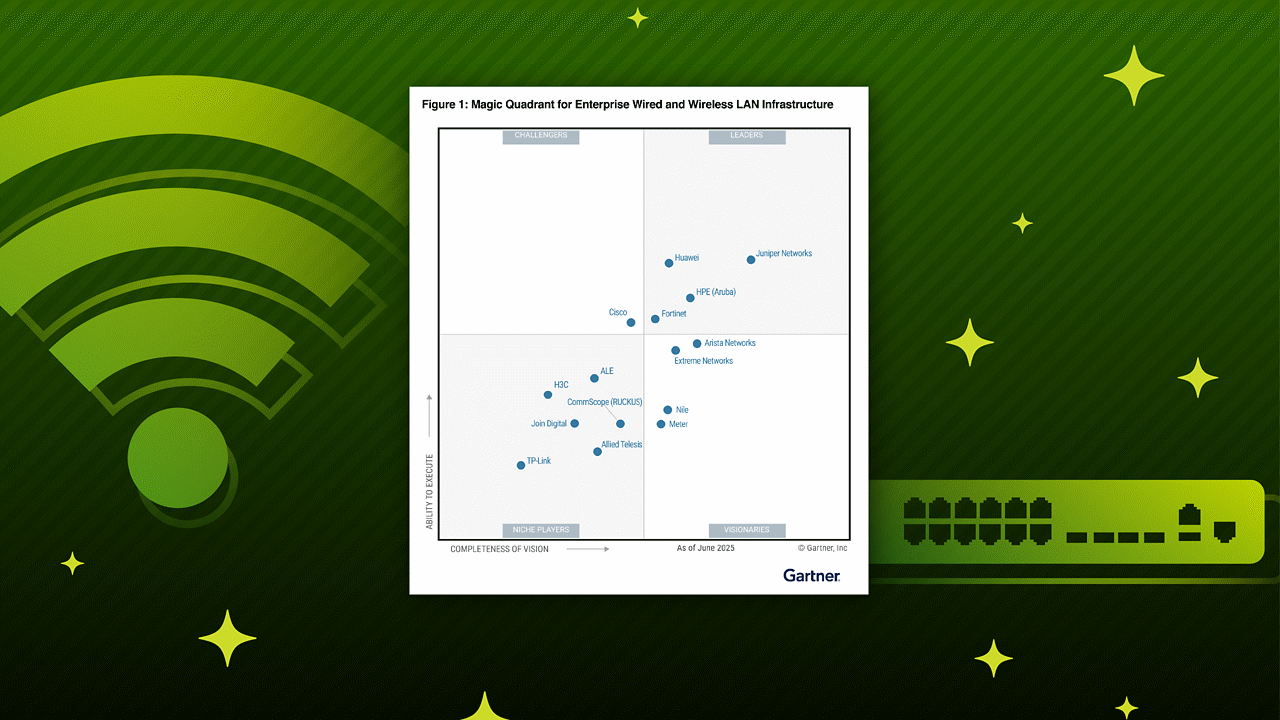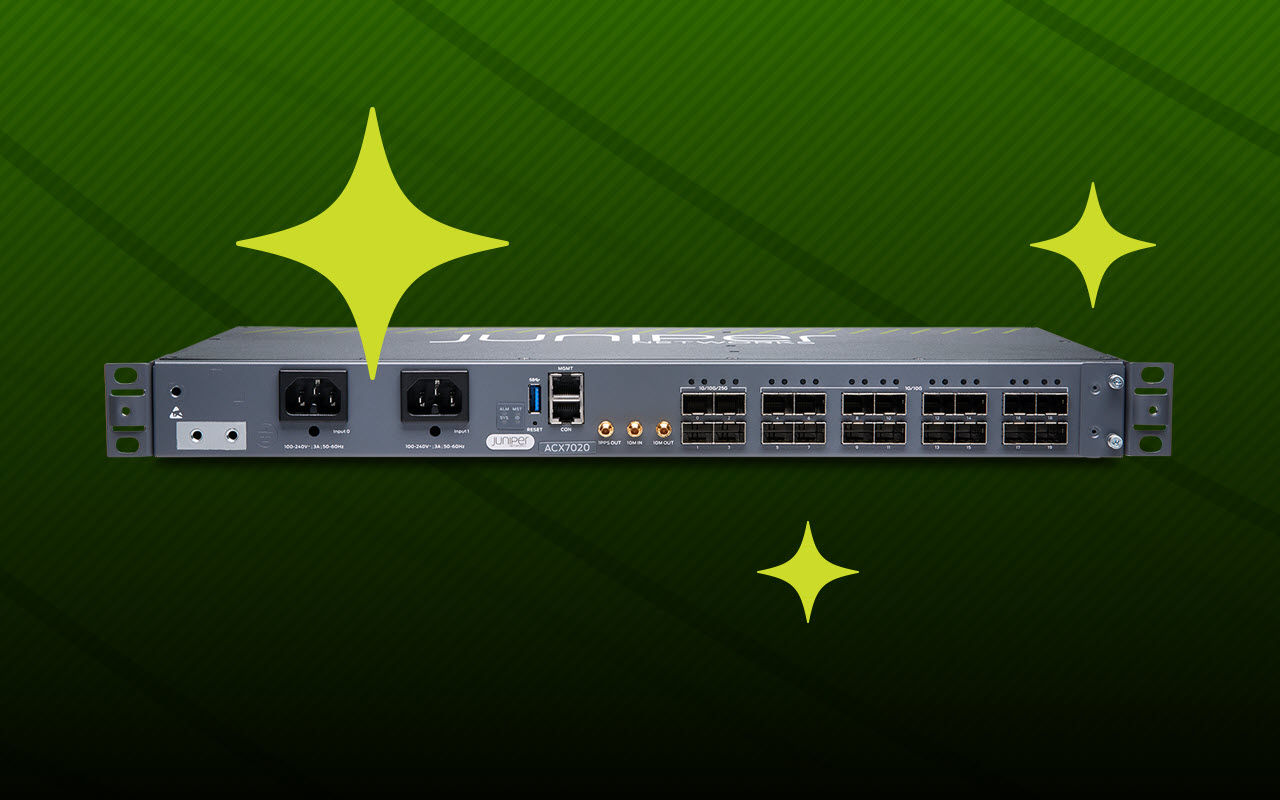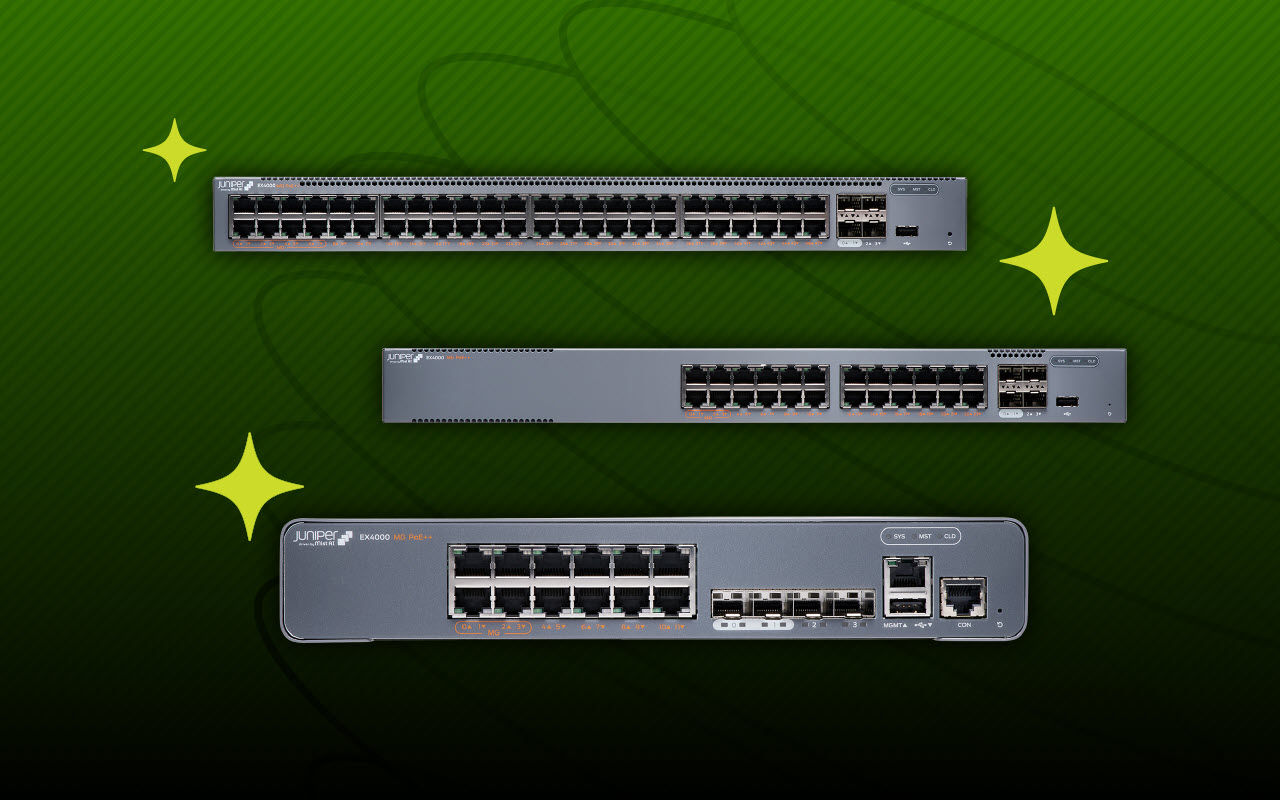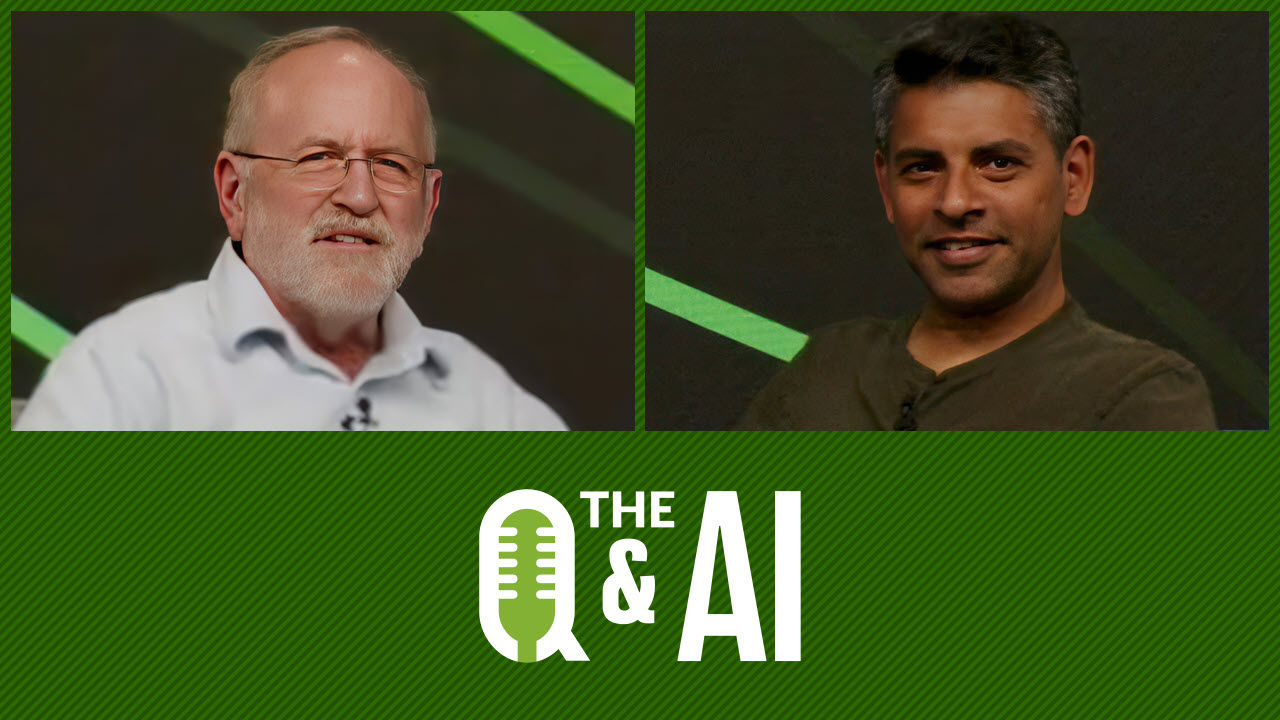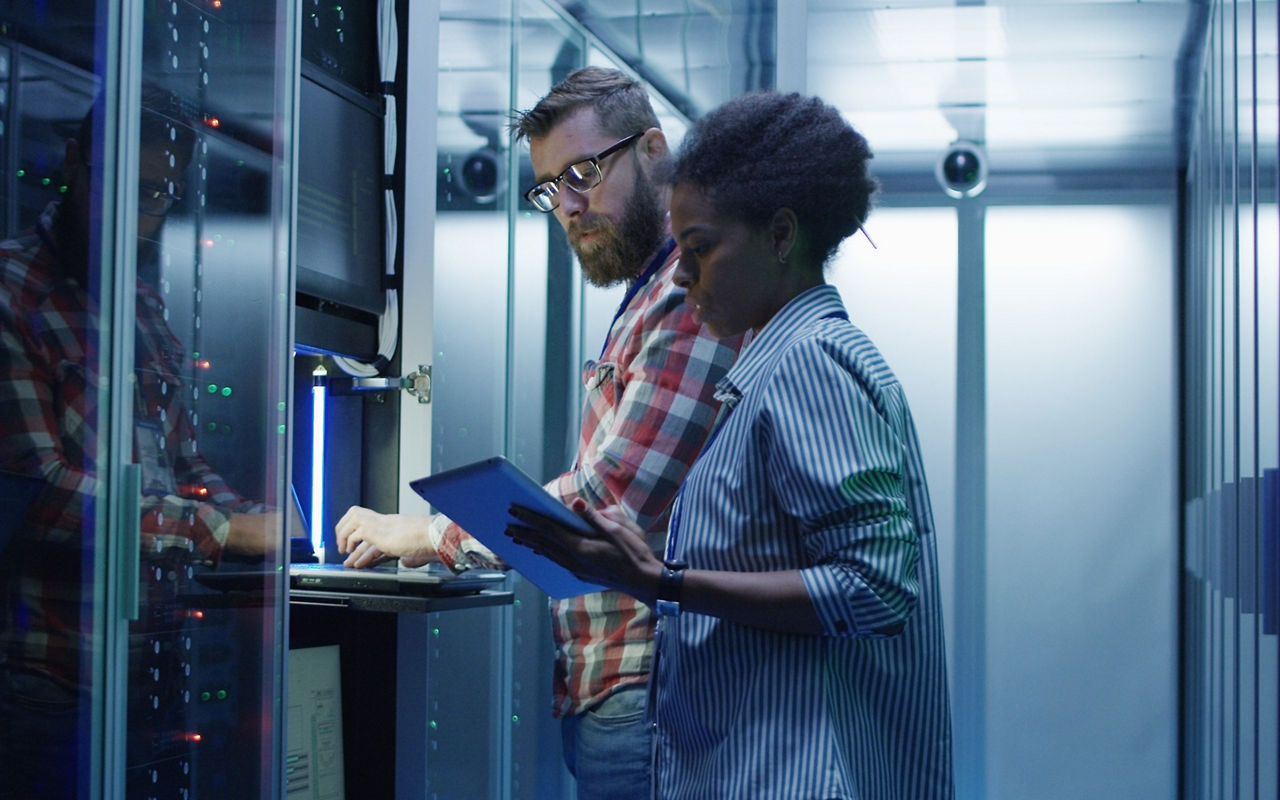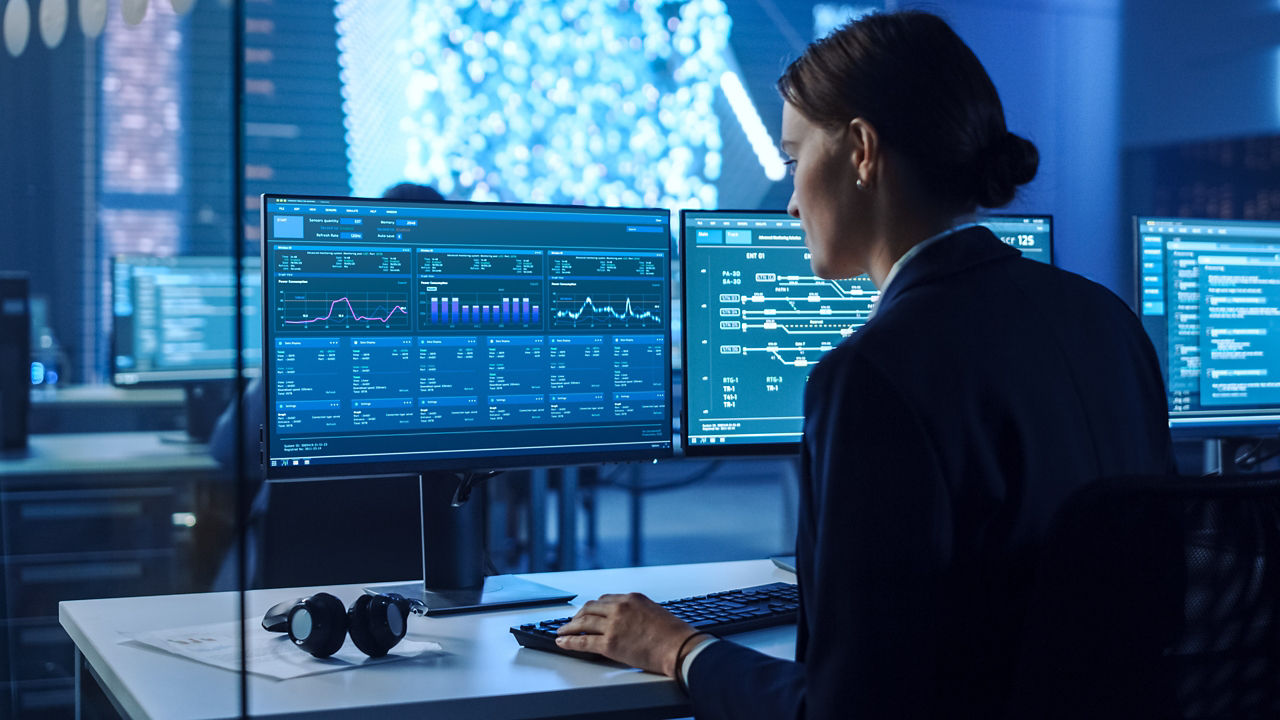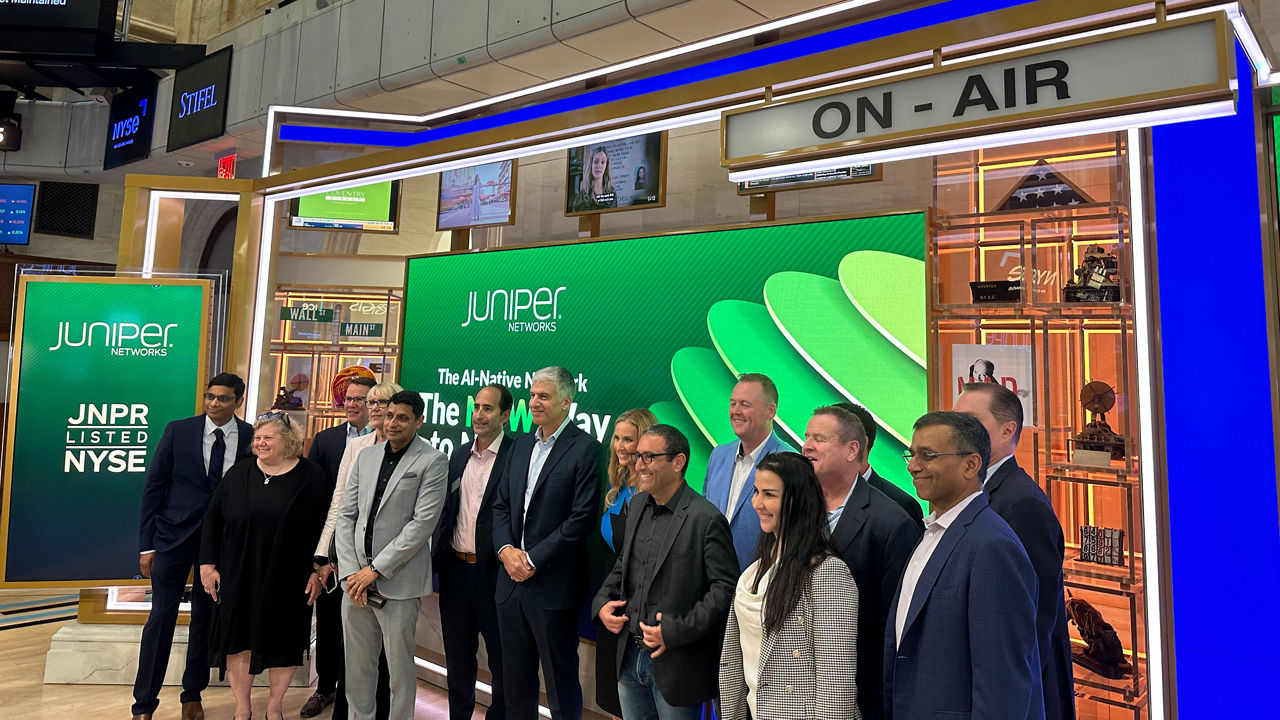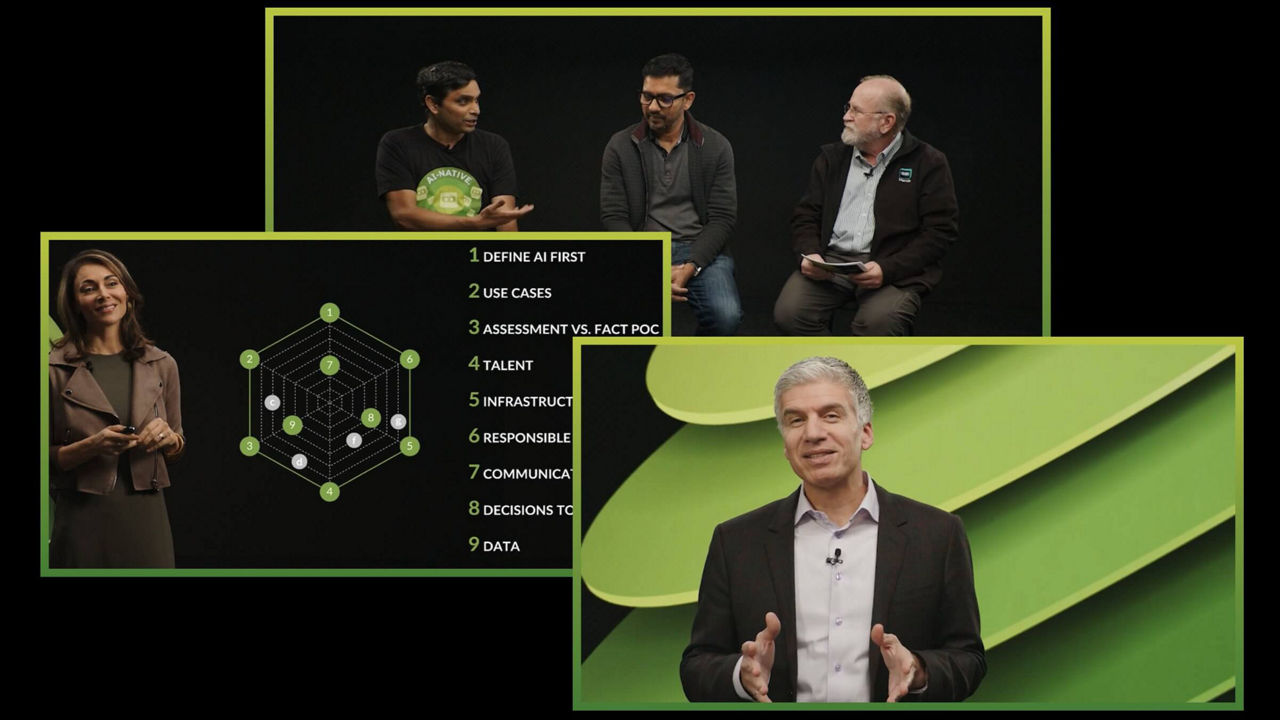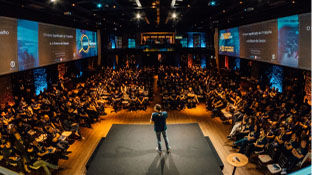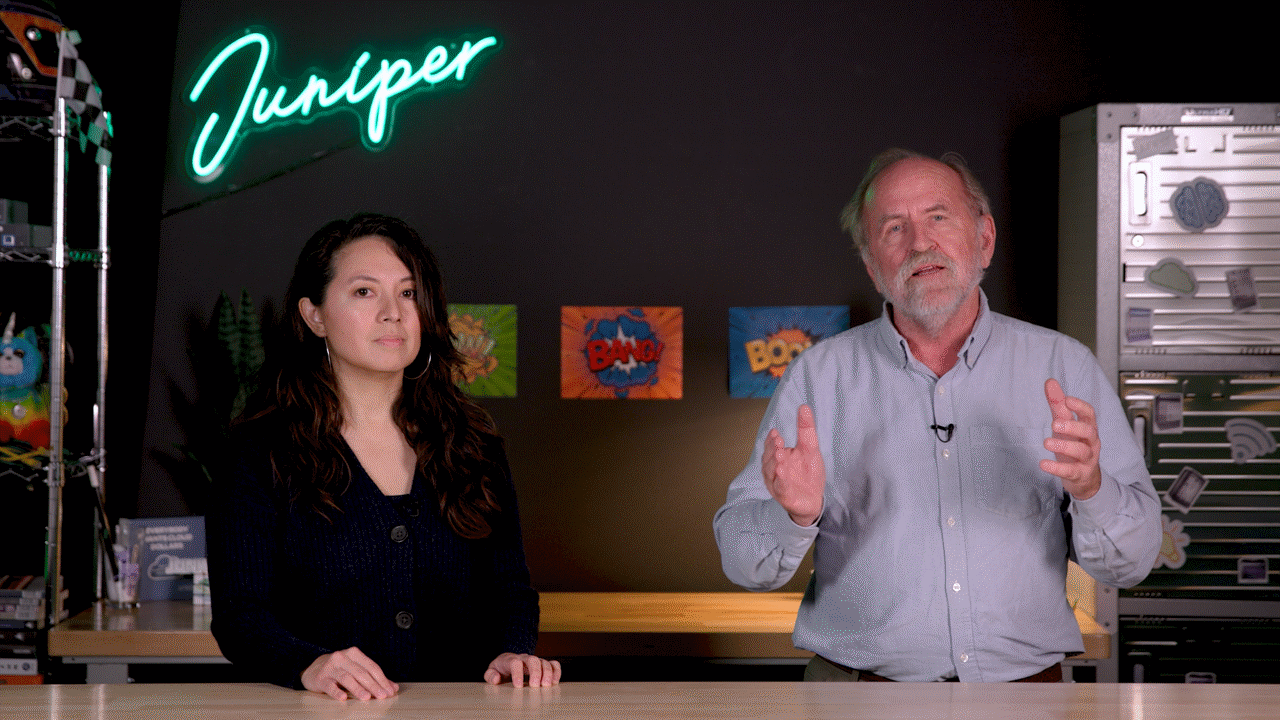Episode 13: Switching to Intelligence: AI Redefines Network Ops

Episode 13: Switching to Intelligence: AI Redefines Network Ops
In this episode of The Q&AI and Bob Friday Talks, Juniper Networks' Bob Friday is joined by Abhi Shamsundar, Director of Product Management, to explore how AI is revolutionizing network switching. They discuss how AI enhances communication, mitigates congestion, improves security, and optimizes user experiences in wired networks. They also delve into anomaly detection, self-driving networks, and the launch of Juniper's cutting-edge EX4000 AI-Native switch.
Abhi shares insights into leveraging cloud data for smarter decisions, automating network tasks to reduce downtime, and creating seamless user experiences. Discover how Juniper is shaping the future of network reliability and efficiency through AI-Native innovation.
You’ll learn
How to leverage AI to detect anomalies, optimize packet flow, and enhance security in wired networks
About Juniper’s newest AI-Native, cloud-ready switch with faster boot times, advanced telemetry, and innovative design features
How switches exchange data to improve network troubleshooting and reduce manual intervention
Who is this for?
Host

Guest speakers

Transcript
Bob: Hello and welcome to another episode of Bob Friday Talks. Today I am joined by Abhi Shamsundar, Product Manager Director here at Juniper Networks. Today we'll be discussing a more niche topic, AI's role in the process of moving data packets from one device to another, or as we know it, network switching.
We'll go into how it improves communication, reduces congestion, improves security, and optimizes the user experience. Abhi, we welcome you to the show. Before we get going, maybe a little bit of background on how did you get to Cloud AI Ops Adventure?
Abhi: Mist Systems gave me an opportunity to come in as a product management personnel for the Wi Fi space prior to acquisition with Juniper Networks.
And, it opened my mind as to what we could do with the data that we are able to gather into the cloud and make intelligent decisions. So ever since, after the acquisition of Juniper Networks, now I'm in the world of wired networks and utilizing data to make good decisions.
Bob: Yeah. Well, now I always like to start the show, for me personally, when I saw Watson play Jeopardy, that's kind of when AI got on my roadmap. Maybe for the audience, and I always find this interesting. What is your definition of AI?
Abhi: In a simplest form, I would say anything that a human would do to alleviate correct, remediate a situation. If somebody else can do that without taking rest, and that's the smartest form of automation for me, would be AI. That's how I would see it.
Bob: Yeah. So now curiosity, before Mist, AI was even relevant to what you're working on, or was Mist the really first AI.
Abhi: For most things that I have worked on prior to prior to Mist, AI was not a thing because the lack of ability to get data at that scale and actually look at data at that scale. So, Mist was the forefront for me to get in the world of AI. Yeah.
Bob: Yeah. So, I know at Mist, you're responsible for our wired assurance, our switching portfolio and that piece of the puzzle, since you joined Juniper in 2019, the journey started with kind of the AP and answering questions about.
Why are you having poor wireless user experience? Maybe we can go a little bit into, how is Marvis Data Science adding value to the switch?
Abhi: Yeah. So, if you look at the entire, enterprise as a whole, you're looking at APs, switches, and then routers. Switches form the most important piece of the puzzle of passing packets as you introduced us. Constantly known for just, hey, providing power and then passing packets along the most important ability for us to actually start looking at data and to make intelligence decisions started looking at when we started looking at support tickets at from a Juniper perspective, support tickets helped us understand what are the nature of problems that we have to go address and what that did is we started taking, taking data that is relevant for those support tickets to be solved and we started applying what would a human do?
Kind of idea towards that and that's where you know most popularly for people who run wired networks the most favourite kind of traffic that they would be looking at is broadcast and multicast traffic and if there is a deviation in its regular course. And that's where you'd want to know and the administrators want to know.
And the thought process of anomaly detection kicked in. So being able to baseline certain sets of traffic and, and their behavior and looking for patterns in anomaly is a huge plus for us in doing wired networks.
Bob: Yes. I mean, I guess, if you're in the switching business, wired broadcast storms, multicast storms, this seems to be a typical problem in that part of the business.
It sounds like you've been working with the team on the data science of anomaly detection, right? To be able to detect these anomalies, detect when the broadcast storms are, where are we on trying to basically correlate that with other events? So, it sounds like right now, Marvis and the data science team have gotten to the point, I can detect this problem. How are they doing on trying to correlate it to the cause of the problem?
Abhi: I mean, just like you said, most times, if everything was usually per baseline, if there's a deviation, it's usually because of a reason. Somebody added a new switch, somebody changed the config, whatever those reasons could be, the beauty of, having all of the data already in the cloud would mean we could easily correlate those events to make that, make that even more just saying hey, you have a deviation in baseline, when, of multicast traffic.
But at the same time, these were things that happened, you might want to take a look at. At this point in time, the detection is rock solid, and the correlation work is in progress, and that's the next step, for us to be able to say, you had a bad experience, and here's why, and we're on our journey to get there.
Bob: Yeah. So, if you look at cloud and AI, they're like two sides of the same coin, that's cloud AI ops, and the wireless space, we started from scratch. We built this access point. Now, on the switch side, you inherited switches when you came to Juniper. Maybe give the audience, what was the experience of having to make a cloud friendly switch, getting data back to cloud, working with support teams, how did that go?
Abhi: Yeah. So, the idea of, where we started with the wireless world as well was exactly, we looked at problems and we went about solving them and we took the exact same approach for the wired world too. And the best place for us to find problems is our own, TAC. We go, we went in, we looked at problems that, that TAC experienced and that operation continues on a weekly basis even today.
For us to be able to see what are the nature of problems and how much of it can. Marvis answer as part of the conversation. So, we took the problem definitions and we went to Junos, which was an extremely agile, automatable framework for us to get into, get start getting data and telemetry back to the cloud.
In fact, ever since the acquisition happened in 2019. And, two years, past, we also went in and made improvements in the way we collect telemetry. And that's the project was called as CloudX and it's out now. What that helps us is the freshness of data. How quickly are we able to, gather telemetry from a switch? And also, how do we use that to make intelligent decisions?
Bob: Oh, Okay.
Abhi: So, Cloud X has been now out there for us. And what that does is now you have a lot more events and a lot more statistics that will help us make decisions for us. An example that I could throw out as part of that is we spoke about our ability to look at, we're looking at, data packets at any given point in time, and that's every port every minute.
Now, where do we get from there is, one of the examples that brought about Juniper Networks IT said, hey, our cameras sometimes just go offline. And, the first order of operation is for us to go do something about it. And it involves a ticket that's generated that goes to the network team. They go bounce the ports after.
Now, if we know, if we're constantly baselining traffic, we don't have to always just rely on anomaly detection for it to be a surge in traffic. But also, if somebody goes really quiet. And all they need is just a cake. We could do that and we could automate that. What that actually drives our outcomes is, the camera team doing pink sweeps.
And the network came finally finding out from a ticket that the camera is down and then they addressing them is probably a six, seven hour window before the camera comes back online.
Bob: Okay, so this is the beginnings of something that sounds like self-driving. Right. And I think that was one of the original visions of Mist, right?
We wanted to build something that could basically deploy and operate networks on par with human IT teams. Now, I took my first self-driving Uber Waymo trip. It sounds like we have port reflections that we have Marvis now resetting ports automatically. Any other examples, where you're seeing self-driving and the wired assurance switching piece of switching place of the portfolio?
Abhi: There are many avenues for us to address the one of the avenues that you saw was an end user experience and for us, again, camera was a wired end user. Now we are also looking at how do we make sure the networks just keep running. Right? If there are processes, I mean, it is software and there are processes that that may not be healthy sometimes and that those are areas that we actually are constantly looking at and we automatically can just tickle them and say, let's come back to serving clients and not be in that state.
Obviously, we use that data to enhance, our firmware, quality as well after. But what this ensures is it continues user experiences to be never heard. DHCP is a simple example to make sure DHCP is serving IP addresses. If the process isn't healthy, we can get it back to a healthy state. That's one example.
There are other such examples with, if you have too much storage on your switches, you want to make sure the device is in a clean state to operate. We could automate the operation without having to affect the end user. All of the themes I drive towards is to make sure there should be lesser number of end user, tickets that will come through to say, hey, something wasn't working.
Bob: So relative to my self-driving Waymo Uber experience, are we getting closer to the self-driving network experience?
Abhi: We are at least,10%, 15 percent of the way because we have a lot to go. We will continue to strive towards that journey, but a good start is where we started. We're going to make sure experiences are going to be okay.
Furthermore, we could also take this to the next level. We could start actually configuring misconfigured ports, for example.
Bob: Okay. Now, Abhi, I know you're the product manager of the Wired Assurance Switching Portfolio. I heard a rumour that there's a little bit of an announcement that you've got a little surprise for the audience here. Maybe a little bit about, I hear there's a new switch coming out.
Abhi: It is our EX4000 line of series. It is us rounding about our portfolio with our AI native switches. We are extremely excited about this switch. This switch has all the learnings that we took from the last three years to say, what could make the network keep running?
And the first most important thing is, keep the downtime low and keep the downtime low is equal to keep the boot time fast. And this switch, switch boots sub, 120 seconds. It's extremely quiet. We took real feedback, from users who said, we're going to place these in cashier's desks.
They want to make sure that their devices are quiet. At the heart of it all, it's a device that, that we are extremely proud of. It's AI native cloud native. Zero trust and resilient buzzword bingo. But it's truly, a place where you're able to scale this to go into a place and say that it's a 10 switch network or 100 switch network.
The cloud is there, and that's the cloud native part of it without having a scale set. Agile fashion, AI native, we spoke about all the functions that we are, that we said we were doing from the cloud. This switch powers the data directly natively to the cloud. The switch provides the freshness of data that's required.
And absolutely, it's the fastest switch that we have built. It's Wi Fi 7 ready, that means all It is able to support UPOE, and it rounds out about our entire ANA2 portfolio, and I'm super excited about this.
Bob: Okay, so this is the next generation, our cloud friendly switching portfolio. Sounds like we're going to have faster booting times, more telemetry coming back.
Now, I also heard, are these switches actually talking to each other now? I heard we have a little Bluetooth thing going on.
Abhi: Yeah, so these switches actually speak to each other. The wireless world, we have APs telling other APs that I'm not able to connect somewhere because and whatever that reason could be, I don't have an IP.
The switches talk to each other. They tell that I don't have an IP address, for me to get there. It uses LLVP TLVs for it to exchange information. And it's, it's powerful. In a cloud native world, you want to know without having to have a truck roll sent out. To actually, spend three hours sitting in front of a console. You would never have to do that anymore with these switches.
Bob: Okay, well Abhi, I want to thank you for joining the show. It sounds like we're bringing AI to switching and making switching fun again. I want to thank the audience for joining us and look forward to joining you on the next episode of Bob Friday Talks.


